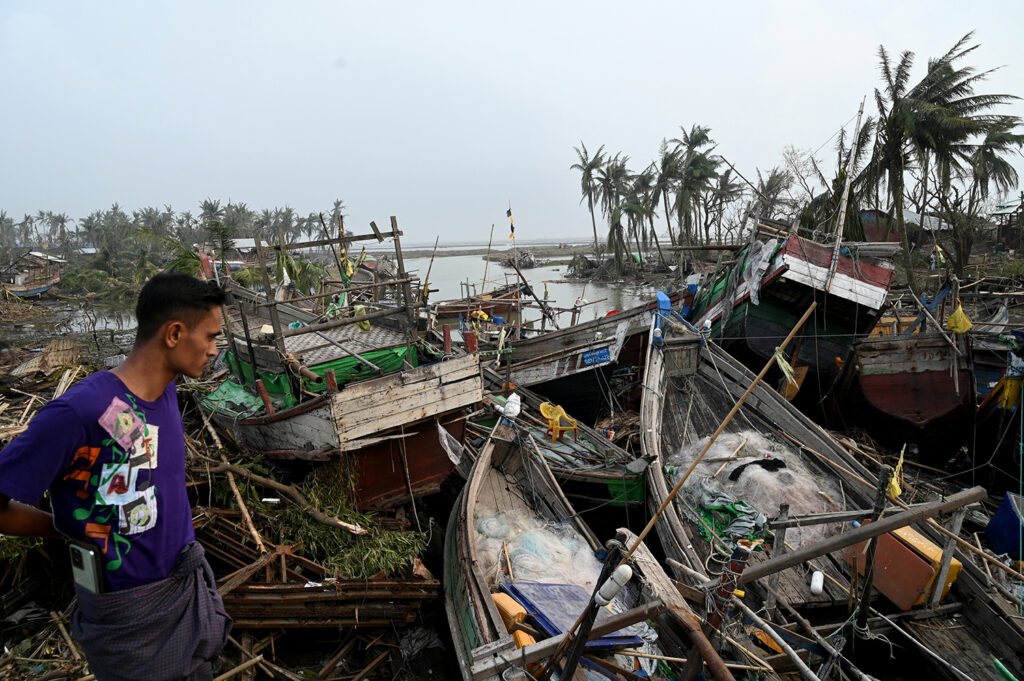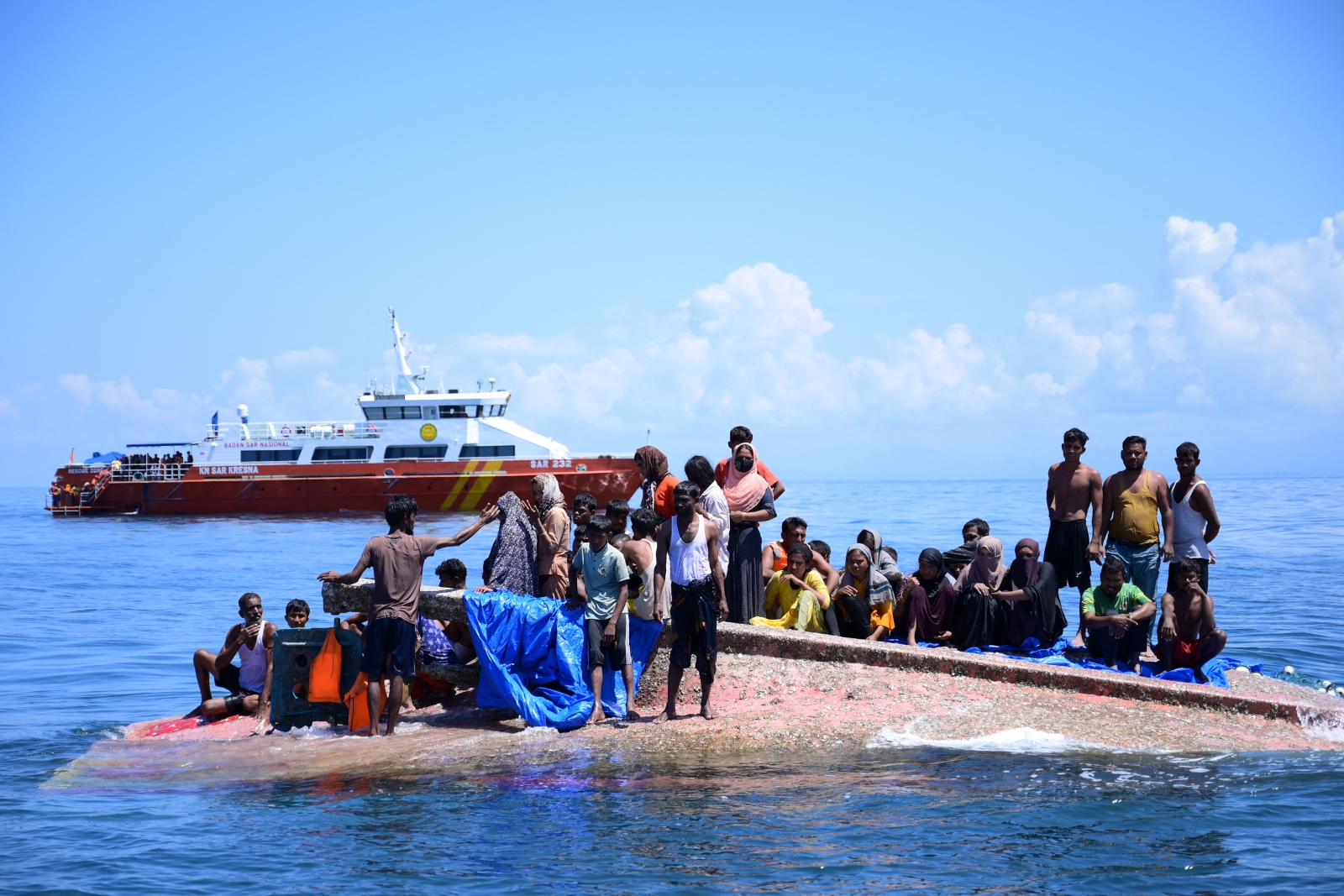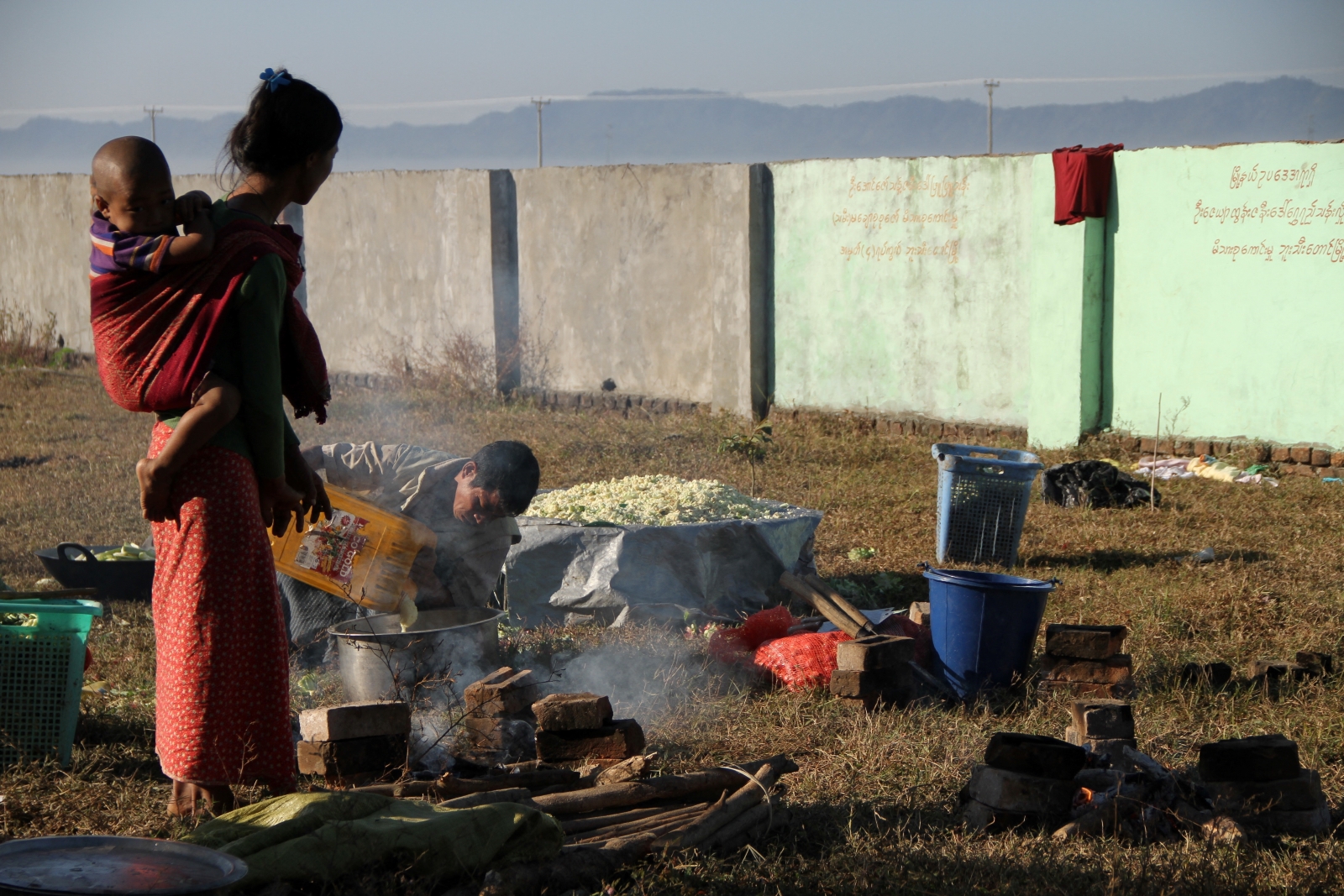By AFP
The death toll from Cyclone Mocha which barrelled through the Bay of Bengal rose on Monday as contact was slowly restored to western Myanmar, with 29 people reported dead.
Cyclone Mocha made landfall between Cox’s Bazar in Bangladesh and Myanmar’s Sittwe carrying winds of up to 195 kilometres per hour, the biggest storm to hit the Bay of Bengal in more than a decade.
The storm had largely passed by late Sunday, sparing the refugee camps housing almost a million Rohingya in Bangladesh, where officials said there had been no deaths.
Twenty four people were killed in Khaung Doke Kar village tract, northwest of Sittwe, a Rohingya camp leader told AFP, requesting anonymity due to fear of reprisals from the junta.
Several others were feared missing from the low-lying tract, home to Rohingya villages and IDP camps, he said.
AFP footage from the area showed wooden fishing boats smashed to splinters and piled up near the shore.
At least five people were killed in Myanmar and “some residents” were injured, the military junta said in an earlier statement, without giving details.
More than 860 houses and 14 hospitals or clinics had been damaged across the country, it said.
Communications were still patchy on Monday with Rakhine state’s capital Sittwe, home to around 150,000 people and which bore the brunt of the storm according to cyclone trackers.
Hundreds of people who had sheltered on higher ground were returning to the city along a road littered with trees, pylons and power cables, AFP correspondents said.
In Sittwe, power pylons hung low over deserted streets and trees still standing were stripped of leaves.
At least five people had died in the city and around 25 had been injured, local rescue worker Ko Lin Lin told AFP.
It was not clear whether any of them were included in the death toll in the junta’s statement.
Mocha made landfall on Sunday, bringing a storm surge and high winds that toppled a communications tower in Sittwe, according to images published on social media.
“I was in a Buddhist monastery when the storm came,” one resident told AFP.
“The prayer hall and monk dining hall have collapsed. We had to move from this building and that building. Now roads are blocked as trees and pylons are fallen.”
Junta-affiliated media reported that the storm had put hundreds of base stations, which connect mobile phones to networks, out of action in Rakhine.
‘Extensive damage’
The United Nations said communications problems meant it had not yet been able to assess the damage in Rakhine, which has been ravaged by ethnic conflict for years.
“Early reports suggest the damage is extensive,” the UN Office for the Coordination of Humanitarian Affairs said late on Sunday.
Bangladesh officials said they had evacuated 750,000 people.
Secretary of the disaster management ministry, Kamrul Hasan, told AFP on Monday no one had died in the cyclone.
The damage was also minimal in the Rohingya camps, where about a million people live in 190,000 bamboo and tarpaulin shelters, officials said.
“Although the impact of the cyclone could have been much worse, the refugee camps have been severely affected, leaving thousands desperately needing help,” the UN said as it made a urgent appeal for aid.
Jomila Banu, a 20-year-old Rohingya woman from Nayapara refugee camp at Teknaf, said: “The roof of my home has been blown away by the wind, now I am eating rice under the open sky with my children.”
Better forecasting and more effective evacuation planning have dramatically reduced the death toll from such storms in recent years.
Scientists have warned that storms are becoming more powerful as the world gets warmer because of climate change.
Cyclones – the equivalent of hurricanes in the North Atlantic or typhoons in the Northwest Pacific – are a regular and deadly menace on the coast of the northern Indian Ocean where tens of millions of people live.
Cyclone Nargis devastated Myanmar’s Ayeyarwady Delta in 2008, killing at least 138,000 people.
The then-junta faced international criticism for its response to the disaster. It was accused of blocking emergency aid and initially refusing to grant access to humanitarian workers and supplies.







